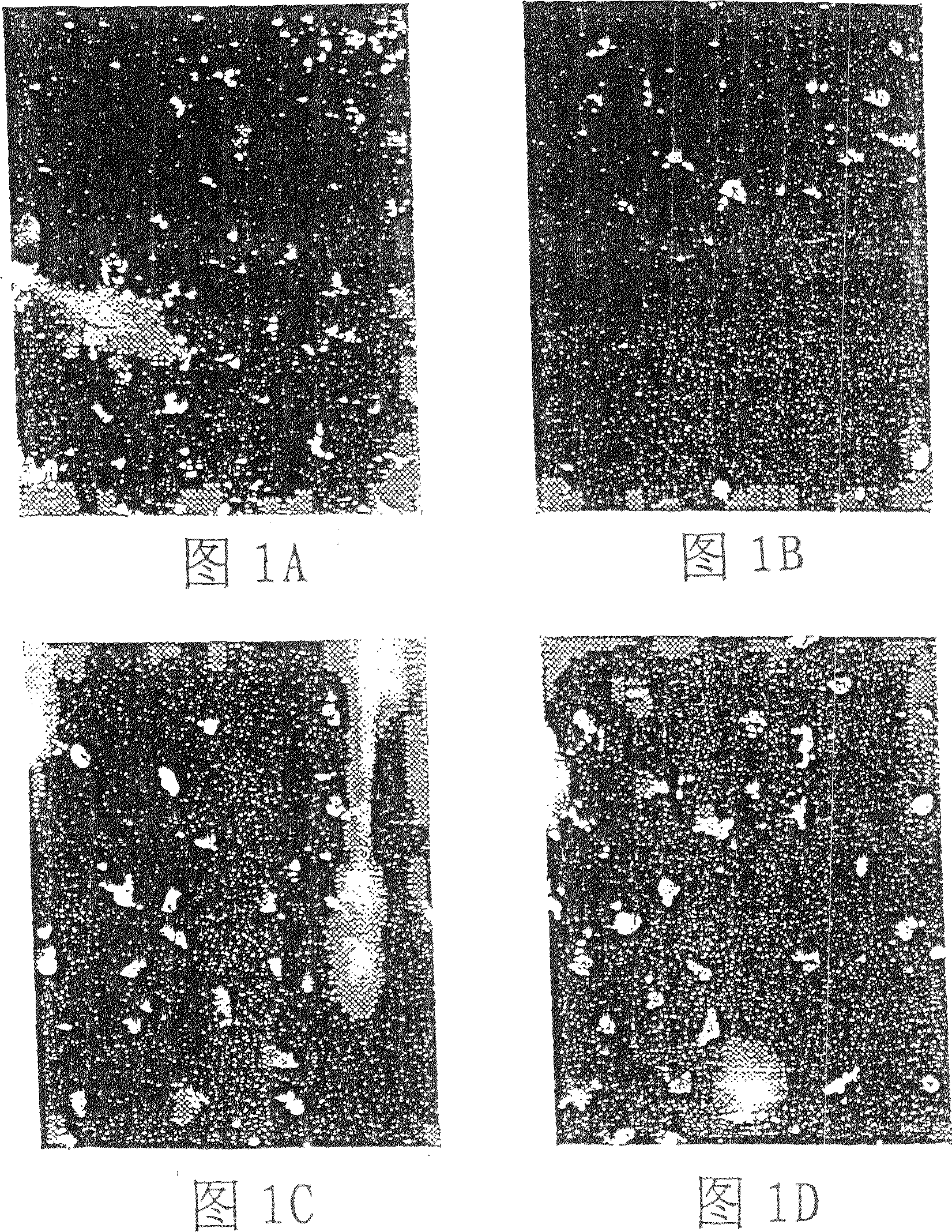Adjuvant for transcutaneous immunization
An adjuvant and immune response technology, applied in the direction of vaccines, biocides, aerosol delivery, etc., can solve the problems that cannot be expected to obtain immune effects
- Summary
- Abstract
- Description
- Claims
- Application Information
AI Technical Summary
Problems solved by technology
Method used
Image
Examples
Embodiment 1
[0147] BALB / c mice aged 6 to 8 weeks in a group of 5 mice were immunized percutaneously as described in the "Methods of Immunization" above. Mice were immunized with 100 μl of the immunization solution prepared as follows: the liposomes prepared as described in "Preparation of Liposomes" above were mixed with a salt solution to form liposomes, and then the salt solution (only containing lipids) was used to immunize mice. The group of plastids) or CT dissolved in a salt solution to dilute the pre-formed liposomes to produce an immune solution. Each 100 μl of the solution contains liposomes containing 10-150 mM phospholipids and 100 μg CT. The CT was mixed with a saline solution to prepare an immune solution containing 100 μg CT per 100 μl solution for the CT-only group. Vortex the solution for 10 seconds before inoculation.
[0148] The mice were transcutaneously immunized at 0 and 3 weeks, and 3 weeks after the booster immunization, the antibody level was determined using the ELIS...
Embodiment 2
[0153] BALB / c mice aged 6 to 8 weeks in a group of 5 mice were immunized percutaneously as described in the "Methods of Immunization" above. In week 0 and 3, immunize mice with 100 μl of the immunization solution prepared as follows: mix BSA with saline solution to prepare an immunization solution containing 200 μg of BSA per 100 μl salt solution for use in the BSA-only group; in the salt solution BSA and CT were mixed to prepare an immune solution containing 200 μg BSA and 100 μg CT per 100 μl saline solution for the group receiving BSA and CT. When using liposomes, prepare liposomes as described in "Preparation of liposomes" above, and first mix with salt solution to form liposomes, and then use BSA or BSA+CT diluted in salt solution The formed liposomes are used to produce an immune solution. Each 10 μl of the immune solution contains 50 mM phospholipid liposomes and 200 μg BSA, or each 100 μl of the immune solution also contains 200 μg BSA+100 μg CT. Vortex the solution for 10...
Embodiment 3
[0158] BALB / c mice aged 6 to 8 weeks in a group of 5 mice were immunized percutaneously as described in the "Methods of Immunization" above. In week 0 and 3, mice were immunized with 100 μl of the immune solution prepared as follows: LT was mixed with the saline solution to prepare an immune solution containing 100 μg LT per 100 μl of the salt solution for the LT-only group. When using liposomes, prepare liposomes as described in "Liposome Preparation" above, and first mix with salt solution to form liposomes, and then dilute the pre-formed liposomes with LT in the salt solution In order to produce an immune solution, each 100 μl of the immune solution contains liposomes containing 50 mM phospholipids and 100 μg LT. Vortex the solution for 10 seconds before inoculation.
[0159] Three weeks after the second immunization, the anti-LT antibody was measured using the ELISA described in "ELISA IgG (H+L)" above. The results are shown in Table 3. LT with or without liposomes was obvious...
PUM
 Login to View More
Login to View More Abstract
Description
Claims
Application Information
 Login to View More
Login to View More - R&D
- Intellectual Property
- Life Sciences
- Materials
- Tech Scout
- Unparalleled Data Quality
- Higher Quality Content
- 60% Fewer Hallucinations
Browse by: Latest US Patents, China's latest patents, Technical Efficacy Thesaurus, Application Domain, Technology Topic, Popular Technical Reports.
© 2025 PatSnap. All rights reserved.Legal|Privacy policy|Modern Slavery Act Transparency Statement|Sitemap|About US| Contact US: help@patsnap.com

